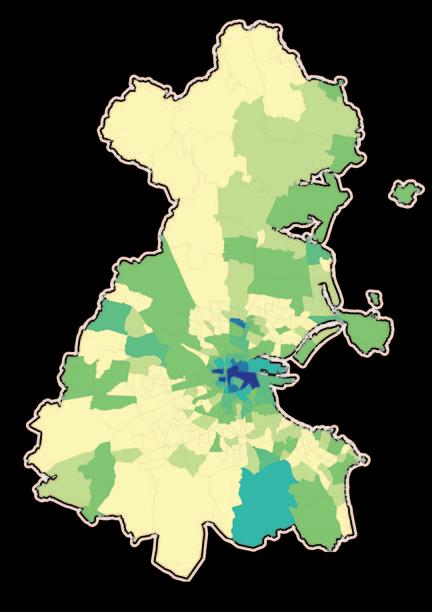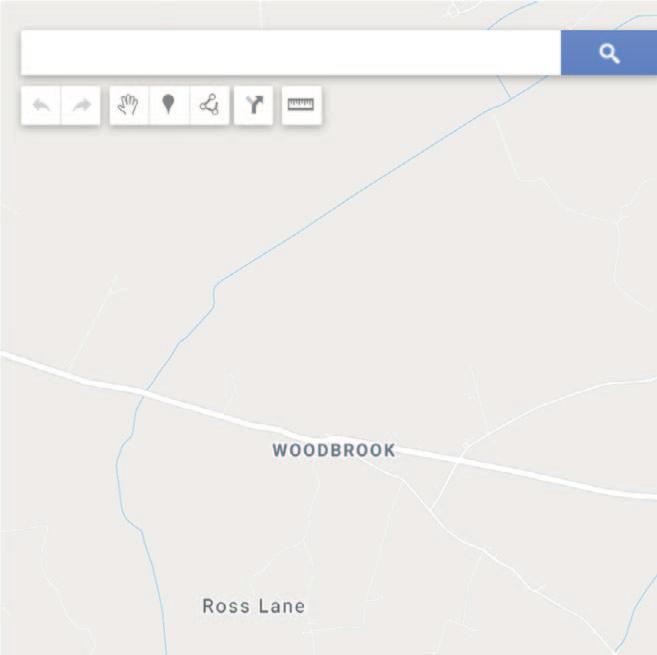
5 minute read
n Airbnb and gentrification
AIRBNB AND GENTRIFICATION
PHD RESEARCH CARRIED OUT IN TU DUBLIN LOOKS AT THE IMPACT OF AIRBNB RENTALS IN DUBLIN AND COMES TO SOME WORRYING CONCLUSIONS.
ollaborative consumption of the urban arena through sharing economy platforms, such as Airbnb, is a growing concern for urban planners. In the past decade, Airbnb has become a norm within the hospitality sector, but it has recently become infamous for its negative impacts. At the forefront of this is the removal of homes from traditional housing markets and the acceleration of rising rent prices, fuelling gentrification. C
Gentrification Gentrification research stems from work by the sociologist Ruth Glass, which describes increases in house pricing perpetuated by the influx of middle-class ‘gentry’ into lower-class areas. Since its conception in 1964, the term has developed to encompass displacement of local populations by large-scale urban change, such as that caused by modern neoliberalisation and housing commercialisation. Airbnb represents commercialisation of residential areas, placing economic pressure on neighbourhoods, and leading to price increases locally and on a wider scale. Many landlords in cities such as Dublin are turning to Airbnb to commercialise their properties, removing them from the residential rental market with the aim of creating ghost hotels, and taking advantage of the tourism industry.
Antonia Blankenberg PhD student, TU Dublin FEATURE
Facts and figures Since 2016, the number of Airbnbs in Dublin has grown by over 250%. As of June 2019, there are 9,220 available, including entire home/apartment (EHA), private room (PR), and shared room (SR) listings. Growth in EHAs is highest, with a 298% increase, now making up 51% of all listings. It becomes clear that EHAs hold a dominant position in Dublin’s Airbnb market. Looking at such listings alone, density is concentrated in similar regions to that exhibited by all listings, wherein the city centre dominates, with a concentration seen in the north inner city (Figure 1). Of the 9,220 Dublin listings, 50.25% can be deemed to be purely commercial. These are listings that overlook the home-sharing purpose of Airbnb and use the platform as a source of commercial income. A host may be deemed commercial if they meet any one of the following conditions:
n ownership of more than one EHA;
n ownership of one EHA that is available for over 90 days per year; n ownership of more than two PR/SR listings; or, n ownership of a PR listing that is
available for over 90 days per year. Commercial listings create a potential monthly revenue (PMR) of €16,269,862, or 67% of total PMR, despite ownership by only 35% of hosts. Dublin’s highest-earning commercial hosts own a large proportion of Dublin’s listings and earn a majority of the revenue. Top earners have not only more listings, but also a higher nightly price, which increases revenue. The top 10 hosts all operate multiple EHAs, with annual revenue for each of these hosts in the millions of Euro. This uneven distribution highlights Airbnb’s inequality. It remains unclear to what extent regulations have been overlooked by these hosts, although it is clear that the intended use of the platform has been ignored.
Impact on residential rental sector Considering full-time listing counts, which cover listing ownership and annual availability, an estimated 409-940 rental units have been removed from Dublin’s residential rental market. Considering listing occupancies for these units, a minimum of 1,481 people have been displaced, rising to a possible 3,456 when considering high-end figures. The impacts of this are concentrated in the city centre, where tourism is
Commercial Airbnb listings, June 2019

< 5 6-10 11-25 26-50 51-75 76-100 >100


High vulnerability to Airbnb gentrification
FIGURE 1: Commercial listings in Dublin.
concentrated, creating an advantageous market for conversion from traditional renting. In certain areas of Dublin, over 2.5% of the residential rental market has been removed, with up to 6.8% of the population displaced by these conversions. Dublin’s Airbnb growth shows a strong positive correlation to growth in rent prices. It can be determined that should Airbnbs increase by 1,860 from current figures, average rent prices are projected to rise to €1,594.43, a 3.15% increase on current figures. This figure is higher in city centre areas, with Dublin 1 showing a projected increase of 4.6%. When considering these figures, there is a clear impact of the reduction of the housing supply in Dublin due to growing long-term rental conversion to Airbnb. Dublin’s projected 3.15% rent price increase is higher than those calculated in other cities (research in Boston shows a potential increase of 0.4%), highlighting Dublin as a critical case of Airbnb gentrification, commercialising housing markets beyond previous neoliberalisation processes.
Future implications There is no doubt that the lowered rate of affordable housing is impacting Dublin populations, particularly in lower-income areas. Growing Airbnb figures within the city will lead to higher amounts of exclusionary displacement, which can be as detrimental, if not more detrimental, than direct displacement, due to its extra-local impact. As such, it becomes important to outline what the impact may be in the future without adequate legislation. Weighted consideration of Airbnb growth, housing conversion, rent price increases, rental rates, and Low vulnerability to Airbnb gentrification “ socioeconomic conditions allows for the determination of gentrification vulnerability. As would be expected, many areas with high susceptibility to gentrification are clustered within Dublin city centre, where public transport, tourist attractions, and amenities are concentrated. However, vulnerability is also high within the north inner city, Smithfield, and Phibsboro, where factors such as commercial listings were highest. Some suburbs, such as Ballymun, Finglas, and Clondalkin, may be highlighted as prone to Airbnb gentrification (Figure 2). Such areas are generally lower in affluence, which creates an environment for economic displacement of locals. These areas, despite poorer access, are generally subject to lower Airbnb prices, and thus, larger influxes of tourists, which trigger rises in rent prices. Considering the vast impact of Airbnb in Dublin, there is a clear need for additional research and outlining of the effectiveness of legislation such as the Planning and Development Act 2019. It is not yet certain whether this Act has impacted commercial Airbnb rates within the capital; this will only become clear in the coming months. While this Act provides a solid start for Airbnb regulation, it’s geographically targeted and purely quantitative; thus, a more nationwide and hybrid approach may be needed to better tackle the expanding sharing economy in Ireland. FIGURE 2: Gentrification vulnerability in Dublin. SINCE 2016, THE NUMBER OF AIRBNBS IN DUBLIN HAS GROWN BY OVER 250%. AS OF JUNE 2019, THERE ARE 9,220 AVAILABLE









